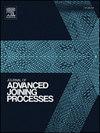Mechanical properties and microstructure of the C70600 copper-nickel alloy and C46500 brass joint using brazing technique
IF 4
Q2 MATERIALS SCIENCE, MULTIDISCIPLINARY
引用次数: 0
Abstract
Naval brass (C46500), due to the presence of tin in this alloy, it exhibits high resistance to atmospheric and aqueous corrosion. This type of brass is widely used in various industries, including marine applications, electrical components, etc. The C70600 copper-nickel alloy, due to the formation of a solid solution, maintains high ductility while increasing tensile strength. High resistance to seawater corrosion, attributed to significant amounts of manganese and iron, are among the key characteristics of this alloy. The joining of these alloys in marine applications are required. Considering the formation of solid solutions and intermetallic compounds and their impact on mechanical properties, controlling their amounts is crucial for achieving optimal results. Brazing is known as an effective method to join these base materials. Since temperature and time are two critical parameters in brazing, influencing the formation of precipitates, this study focuses on optimizing these conditions to achieve desirable microstructural and mechanical properties. The brazing process was performed under 16 different conditions including 650, 680, 710, and 740 °C for 1, 5, 15, and 30 mins. To study the microstructure of joints, and the related phase transformations in the joint region, optical microscopy, scanning electron microscopy (SEM), energy-dispersive X-ray spectroscopy (EDS), and X-ray diffraction (XRD) were used. Mechanical properties of the samples were evaluated through strength testing and micro hardness measurements. The results indicate that with increasing temperature and duration of the joining process, the width of the thermally solidified zone decreases due to the increased diffusion rate, while the width of the isothermal solidification zone increases. Moreover, increasing the brazing time promotes phase segregation. The highest strength, measured at 106.4 MPa, was achieved for the sample joined at 710 °C for 15 mins, with the fracture surface displaying a mixed ductile-brittle mode.
C70600铜镍合金与C46500黄铜钎焊接头的力学性能和显微组织
海军黄铜(C46500),由于在这种合金中存在锡,它具有很高的抗大气和水腐蚀性能。这种类型的黄铜广泛应用于各种行业,包括船舶应用,电气元件等。C70600铜镍合金由于形成固溶体,在提高抗拉强度的同时保持了较高的延展性。高耐海水腐蚀,归因于大量的锰和铁,是该合金的关键特性之一。在船舶应用中需要这些合金的连接。考虑到固溶体和金属间化合物的形成及其对机械性能的影响,控制它们的数量对于获得最佳结果至关重要。钎焊被认为是连接这些基材的有效方法。由于温度和时间是钎焊过程中影响析出相形成的两个关键参数,因此本研究的重点是优化这两个参数,以获得理想的显微组织和力学性能。钎焊过程在16种不同的条件下进行,包括650、680、710和740°C,持续1、5、15和30分钟。采用光学显微镜、扫描电镜(SEM)、x射线能谱仪(EDS)和x射线衍射仪(XRD)研究了接头的微观结构和接头区域的相关相变。通过强度测试和显微硬度测试来评估样品的力学性能。结果表明:随着连接温度的升高和连接时间的延长,由于扩散速率的增加,热凝固区宽度减小,而等温凝固区宽度增大;此外,延长钎焊时间会促进相偏析。当试样在710°C下连接15 min时,强度达到106.4 MPa,断口呈现韧性-脆性混合模式。
本文章由计算机程序翻译,如有差异,请以英文原文为准。
求助全文
约1分钟内获得全文
求助全文

 求助内容:
求助内容: 应助结果提醒方式:
应助结果提醒方式:


